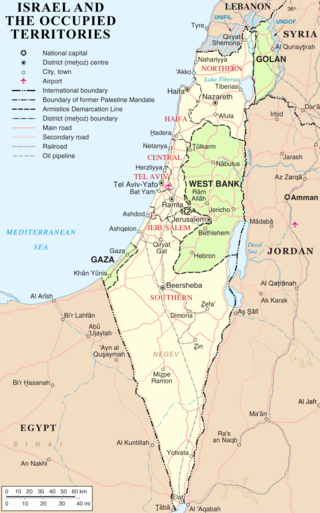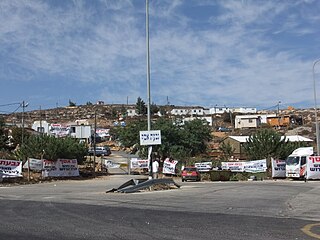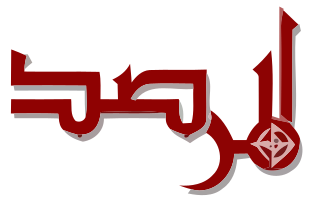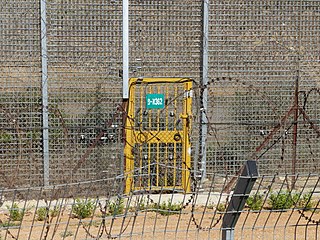
Israeli settlements, also called Israeli colonies, are the civilian communities built by Israel throughout the Israeli-occupied territories. They are populated by Israeli citizens, almost exclusively of Jewish identity or ethnicity, and were first established after Israel's victory in the Six-Day War of June 1967. The international community considers Israeli settlements to be illegal under international law, but Israel disputes this. The expansion of settlements often involves the confiscation of Palestinian land and resources, leading to displacement of Palestinian communities and creating a source of tension and conflict. Settlements are often protected by the Israeli military and are frequently flashpoints for violence against Palestinians. Further, the presence of settlements and Jewish-only bypass roads creates a fragmented Palestinian territory, seriously hindering economic development and freedom of movement for Palestinians.

The Palestinian territories are the two regions of the former British Mandate for Palestine that have been occupied by Israel since the Six-Day War of 1967, namely the West Bank and the Gaza Strip. The International Court of Justice (ICJ) has referred to the West Bank, including East Jerusalem, as "the Occupied Palestinian Territory", and this term was used as the legal definition by the ICJ in its advisory opinion of July 2004. The term occupied Palestinian territory was used by the United Nations and other international organizations between October 1999 and December 2012 to refer to areas controlled by the Palestinian National Authority, but from 2012, when Palestine was admitted as one of its non-member observer states, the United Nations started using exclusively the name State of Palestine. The European Union (EU) also uses the term "occupied Palestinian territory". The government of Israel and its supporters use the label "disputed territories" instead.

United Nations Security Council resolution 446, adopted on 22 March 1979, concerned the issue of Israeli settlements in the "Arab territories occupied by Israel since 1967, including Jerusalem". This refers to the Palestinian territories of the West Bank, East Jerusalem and the Gaza Strip as well as the Syrian Golan Heights.
The International law bearing on issues of Arab–Israeli conflict, which became a major arena of regional and international tension since the birth of Israel in 1948, resulting in several disputes between a number of Arab countries and Israel.

United Nations Security Council resolution 465, adopted unanimously on 1 March 1980, was on the issue of the Israeli settlements and administration in "the Arab territories occupied since 1967, including Jerusalem", referring to the Palestinian territories of the West Bank including East Jerusalem and the Gaza Strip as well as the Syrian Golan Heights.
The Green Line or 1949 Armistice border is the demarcation line set out in the 1949 Armistice Agreements between the armies of Israel and those of its neighbors after the 1948 Arab–Israeli War. It served as the de facto borders of the State of Israel from 1949 until the Six-Day War in 1967, and continues to represent Israel’s internationally recognized borders with the two Palestinian territories: the West Bank and the Gaza Strip.

Israel has occupied the Palestinian territories and the Golan Heights since the Six-Day War of 1967. It previously occupied the Sinai Peninsula and southern Lebanon as well. Prior to Israel's victory in the Six-Day War, occupation of the Palestinian territories was split between Egypt and Jordan, with the former having occupied the Gaza Strip and the latter having annexed the West Bank; the Sinai Peninsula and the Golan Heights were under the sovereignty of Egypt and Syria, respectively. The first conjoined usage of the terms "occupied" and "territories" with regard to Israel was in United Nations Security Council Resolution 242, which was drafted in the aftermath of the Six-Day War and called for: "the establishment of a just and lasting peace in the Middle East" to be achieved by "the application of both the following principles: ... Withdrawal of Israeli armed forces from territories occupied in the recent conflict ... Termination of all claims or states of belligerency and respect for and acknowledgment of the sovereignty, territorial integrity and political independence of every State in the area and their right to live in peace within secure and recognized boundaries free from threats or acts of force."
The status of territories captured by Israel is the status of the Gaza Strip, the West Bank, the Golan Heights, and the Sinai Peninsula, all of which were captured by Israel during the 1967 Six-Day War.

The Golan Heights, or simply the Golan, is a region in the Levant spanning about 1,800 km2 (690 sq mi). The region defined as the Golan Heights differs between disciplines: as a geological and biogeographical region, the term refers to a basaltic plateau bordered by the Yarmouk River in the south, the Sea of Galilee and Hula Valley in the west, the Anti-Lebanon with Mount Hermon in the north and Wadi Raqqad in the east. As a geopolitical region, it refers to the border region captured from Syria by Israel during the Six-Day War of 1967; the territory has been occupied by the latter since then and was subject to a de facto Israeli annexation in 1981. This region includes the western two-thirds of the geological Golan Heights and the Israeli-occupied part of Mount Hermon.

The modern borders of Israel exist as the result both of past wars and of diplomatic agreements between the State of Israel and its neighbours, as well as an effect of the agreements among colonial powers ruling in the region before Israel's creation. Only two of Israel's five total potential land borders are internationally recognized and uncontested, while the other three remain disputed; the majority of its border disputes are rooted in territorial changes that came about as a result of the 1967 Arab–Israeli War, which saw Israel occupy large swathes of territory from its rivals. Israel's two formally recognized and confirmed borders exist with Egypt and Jordan since the 1979 Egypt–Israel peace treaty and the 1994 Israel–Jordan peace treaty, while its borders with Syria, Lebanon and the Palestinian territories remain internationally defined as contested.

In Israeli law, an outpost is an unauthorized or illegal Israeli settlement within the West Bank, constructed without the required authorization from the Israeli government in contravention of Israeli statutes regulating planning and construction. In Israeli law, outposts are distinguished from settlements authorized by the Israeli government. This distinction between illegal outposts and "legal" settlements is not endorsed by international law, which considers both a violation of the norms, governing belligerent occupations, applicable to the Israeli-occupied West Bank.

Annexation, in international law, is the forcible acquisition and assertion of legal title over one state's territory by another state, usually following military occupation of the territory. In current international law, it is generally held to be an illegal act. Annexation is a unilateral act where territory is seized and held by one state, as distinct from the complete conquest of another country, and differs from cession, in which territory is given or sold through treaty.
The international community considers the establishment of Israeli settlements in the Israeli-occupied territories illegal on one of two bases: that they are in violation of Article 49 of the Fourth Geneva Convention, or that they are in breach of international declarations. The United Nations Security Council, the United Nations General Assembly, the International Committee of the Red Cross, the International Court of Justice and the High Contracting Parties to the Convention have all affirmed that the Fourth Geneva Convention applies to the Israeli-occupied territories.

Al-Marsad – Arab Human Rights Centre in Golan Heights is an independent, not-for-profit international human rights organization with no religious or political affiliation that operates in the Golan Heights. The Golan Heights region is internationally recognised by all but the US as Syrian territory occupied by Israel, although Israel asserts it has a right to retain control over the area. The organisation was created in October 2003 and is run from Majdal Shams. It was the first human rights organisation founded in the Golan.

This is a timeline of the development of and controversy over Israeli settlements. As of January 30, 2022 the West Bank settlement population was 490,493 and the settler population in the Golan Heights was almost 27,000 and in East Jerusalem the settler population was around 220,000.

The United Nations General Assembly Resolution 66/225 of 22 December 2011 was a resolution in which the United Nations General Assembly reaffirmed the right of the Palestinian people and of the population of the occupied Golan Heights over their natural resources, demanded Israel to cease the exploitation, damage, cause of loss or depletion, and endangerment of that natural resources and recognized the right of the Palestinian people to claim restitution as a result of Israeli violation of their rights.

On March 25, 2019, the United States officially recognized the Golan Heights as being under the sovereignty of Israel. Signed into effect by the Trump administration, the U.S. presidential proclamation marked the first instance of any country recognizing Israeli sovereignty over the Golan Heights; the territory is viewed as part of Syria under international law, though it has been under an Israeli military occupation since the 1967 Arab–Israeli War. In 1981, Israel's government passed the Golan Heights Law — a de facto annexation of the territory.

The Golan Heights are a rocky plateau in the Levant region of Western Asia that was captured by Israel from Syria in the 1967 Six-Day War. The international community, with the exception of Israel and the United States, generally regards the Golan Heights to be Syrian territory held by Israel under military occupation. Following the war, Syria dismissed any negotiations with Israel as part of the Khartoum Resolution.
















